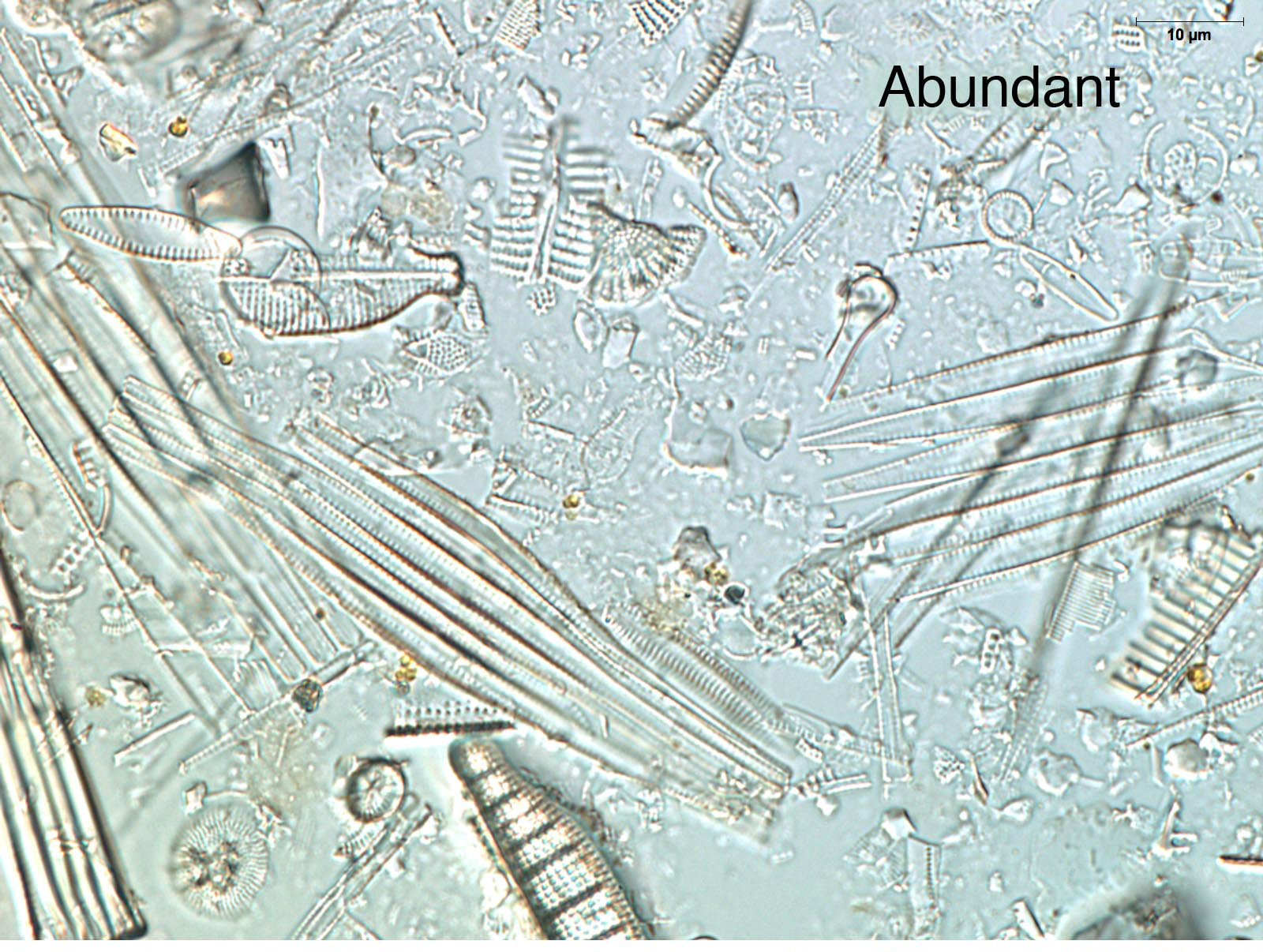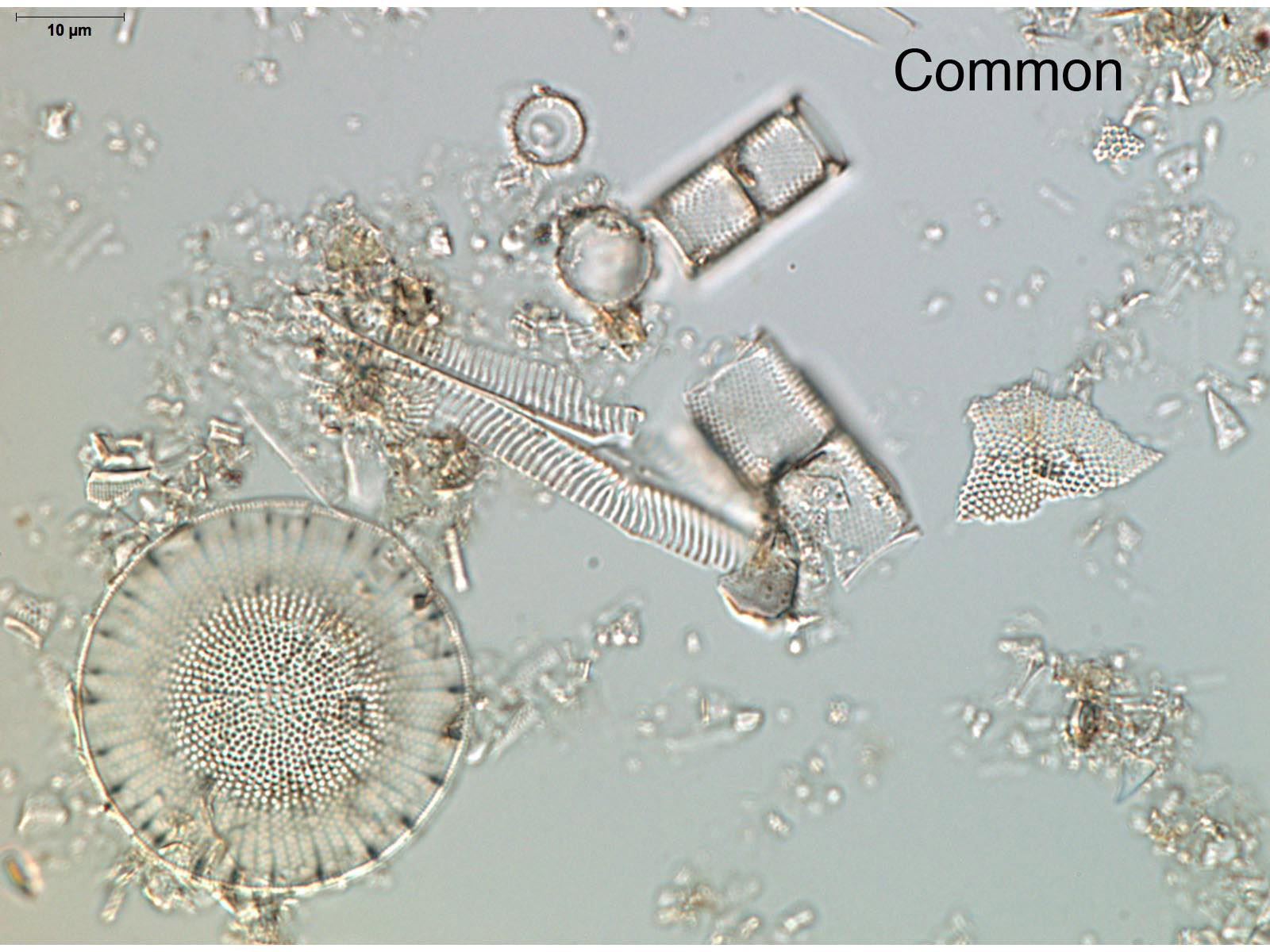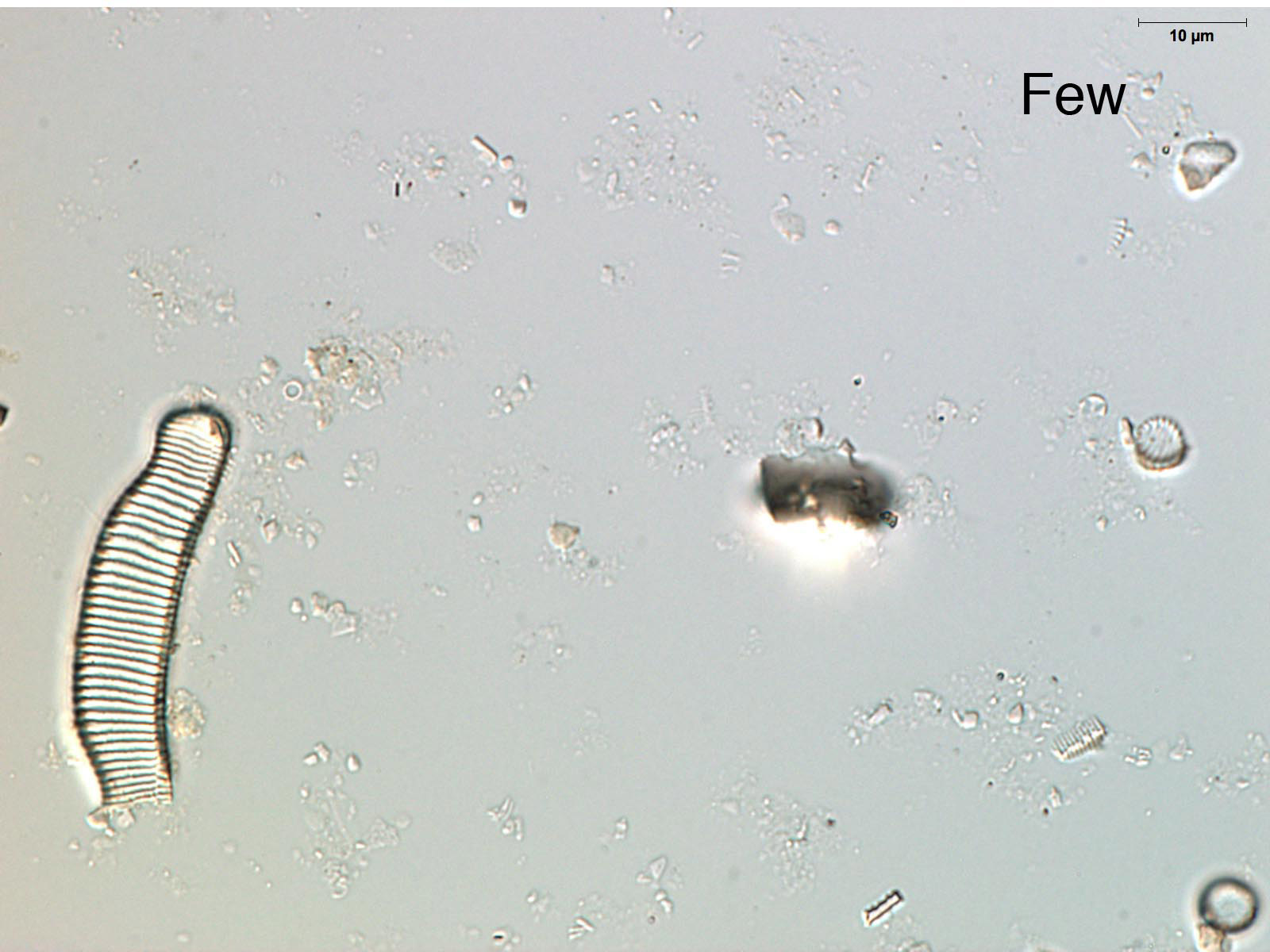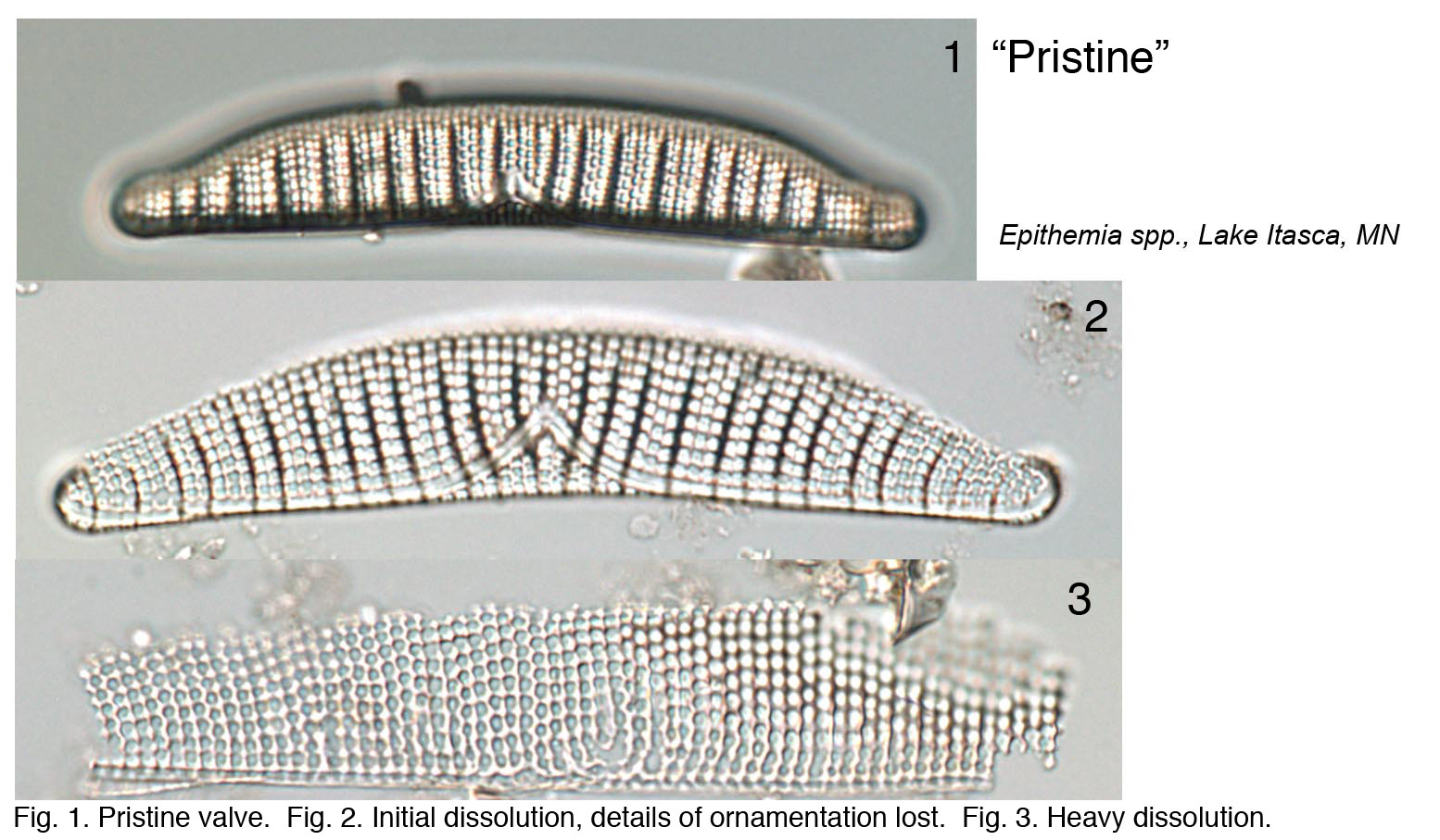Diatoms - Overview
Diatoms are single-celled or colonial microalgae found in almost all freshwater and marine habitats. Diatoms are characterized by having a two-part cell wall composed of biogenic opaline silica. The remains of diatoms are often one of the main inorganic components seen in smear slides and can account for over 80% of dry sediment weight (more commonly 2-10%). Each part of a diatom cell wall is called a valve, and the shape, ornamentation, and patterns on the diatom valve can be used to identify each of the over 25,000 living species.
In addition to noting the presence or absence of diatoms in smear slides, other simple qualitative and quantitative measures can be made from smear slides related to abundance, preservation, and diatom ecology. For identification of diatoms to the genus- or species-level, visit Diatoms of North America.
Diatom Abundance
Diatoms are one of the most common biological microfossils seen in smear slides, but the quantity of diatoms in sediments varies considerably due to the lake's paleoecology, depositional environment, and preservation. Noting quantity of diatoms in a smear slide can help focus future analyses, show shifts in lake productivity (e.g., eutrophication events), and identify changes in the depositional environment (e.g., turbidites).
The abundance of diatoms present in a smear slide can be reported using a relative scale as abundant, common, few, or absent.
Diatom Preservation
The condition of diatom microfossils in a smear slide is a reflection of the depositional environment and will determine their suitability and usefulness as environmental indicators. Several environmental conditions enhance the dissolution of diatoms: breakage, salinity, alkalinity, and silica-poor environments. Diatom valves are composed of biogenic opaline silica and each valve has areas where silica is deposited more thickly (e.g., central areas, raphe ribs) as well as areas with patterns of ornamentation comprising holes (areolae, pore fields) and lines (striae). The dissolution of diatoms generally follows a pattern where highly ornamented or thin areas are lost first, followed by sequential loss depending on silica thickness, until only the most heavily silicified areas of the diatom remain. Diatom species are also differentially susceptible to dissolution. A simple metric (% pristine) based on condition of diatom microfossils in smear slides can be used to summarize the level of dissolution in your samples.
ExamplesCyclotella species [NEED IMAGE]
Epithemia species
Pinnularia species
Ryves et al. (2001, 2006, 2009) discussed issues surrounding diatom dissolution in sediment cores, proposed several indices to describe dissolution artefacts, and offered insights into how dissolution might affect interpretation of paleorecords.




